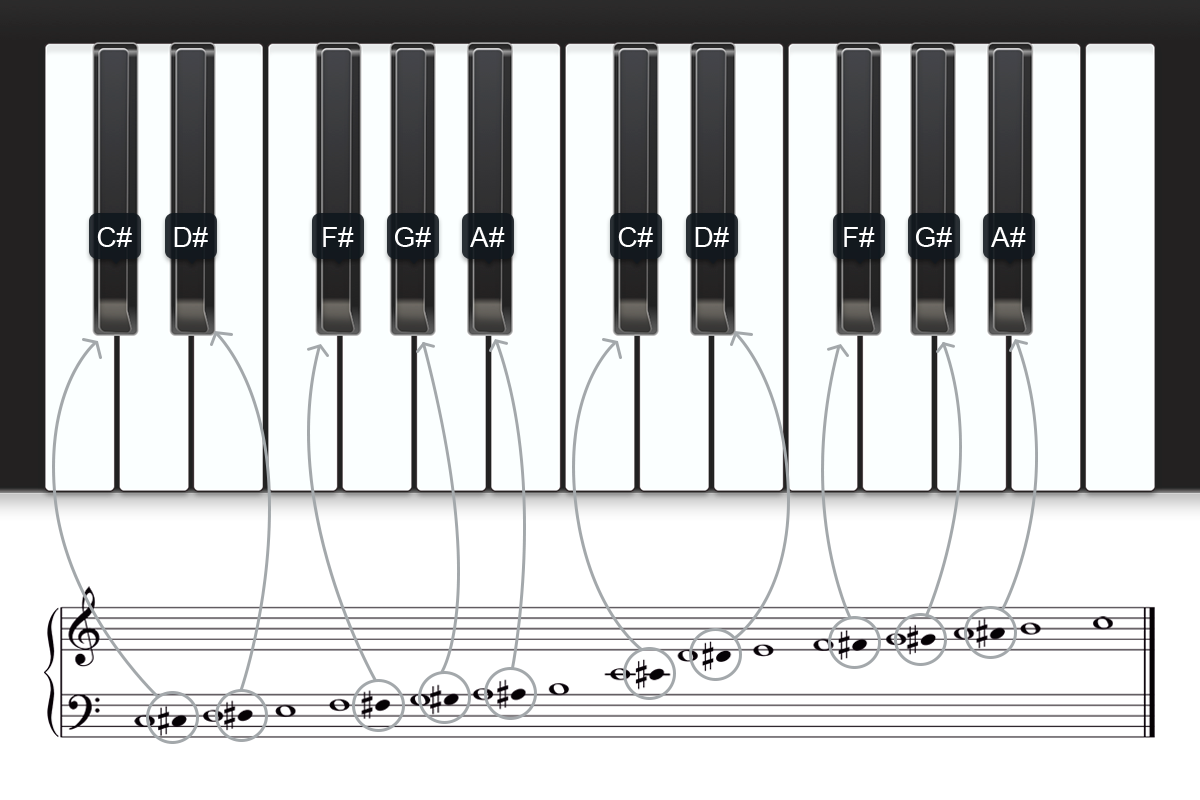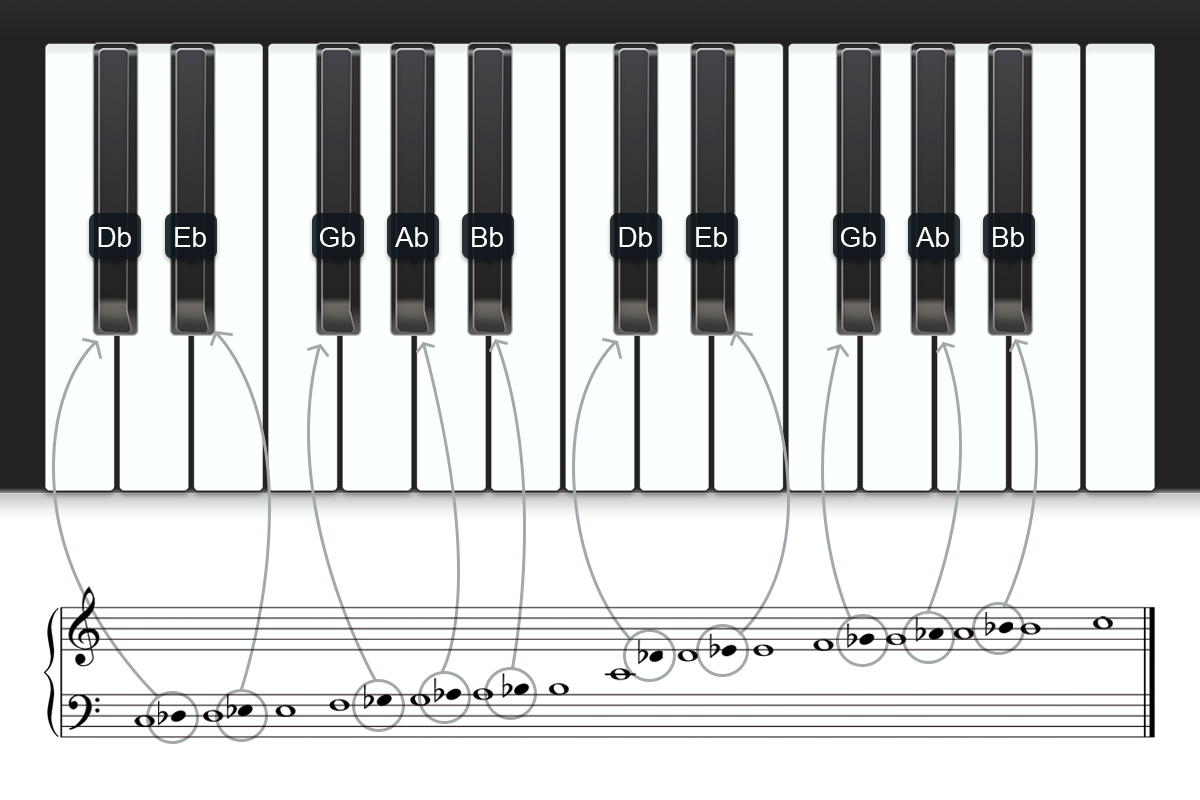Hi,
In this article, we will talk about notes names, clef, staff...
I strongly recommend that you play every single example on your instrument (and on a piano if your main instrument isn't the piano)
But first, let's clarify some notations. (if you want to, you can skip this section, and come back to it later if something seems unclear)
Notations
We will (almost) always use what is called "common notation" : it includes, mainly : a staff (or two, or more staves) and a clef. (each staff has a clef).
- A staff is made with 5 horizontal lines.
- A clef is a good-looking musical symbol ! (you will mainly use treble and bass clefs)
here is a staff :

here is a treble clef :

and here is a bass clef :

We place notes on or between those lines.
Once the note is placed on the staff, you can tell the note name thanks to two elements :
- the vertical position of the note (on which line, or between which lines)
- the clef
If you change one or the other, the note name changes.
Notes names
Natural notes (white keys)
First, have a look at this image : it represents a piano keyboard, a bass clef and a treble clef (weird symboles on the left),staves (horizontal lines) ,and the name of the notes, with the correspondance between notated notes and piano keyboard. For the moment, we are only talking about the white keys (also known as natural notes).

If you want to, you can have a look at this score.
Altered notes (black keys)
Now, let's take a step further and talk about the black keys.
Each black key has two names (in fact even the white keys have several names, but we will discuss that later)
Sharps
First, let's have a look at the "sharp names"

Flats
Now the "flat names"

The corresponding score.
You may have noticed that this symbol : ♮ (called "natural") appears on the score. It means "whatever happened before, play this note as a natural note". For example, the first D in this score is in fact a D♭ : the next one is a natural D, that is why we use the ♮ (called "natural"). If you don't put ♮ on the second D, it would be played D♭. Accidentals (sharps, flats and naturals) apply within the measure in which they appear, unless canceled by another accidental sign, or tied into a following measure.
So technically, the picture corresponding to flats only is not correct. (some naturals would be necessary)
We will discuss that later in a "Notation post"
Sharps and flats : Enharmonic equivalence
For now, you can start by remembering that notes have multiple names (or notations) : we choose the one that seems to be the most convenient, regarding the situation we face.
For example :

Ab and G# are enharmonic equivalents. (same note, different names)
Everything
So, to sum up, we have :

Note names in a nutshell : check this video
In the next article, we will talk about the distance between notes.
All the best,
Seb
